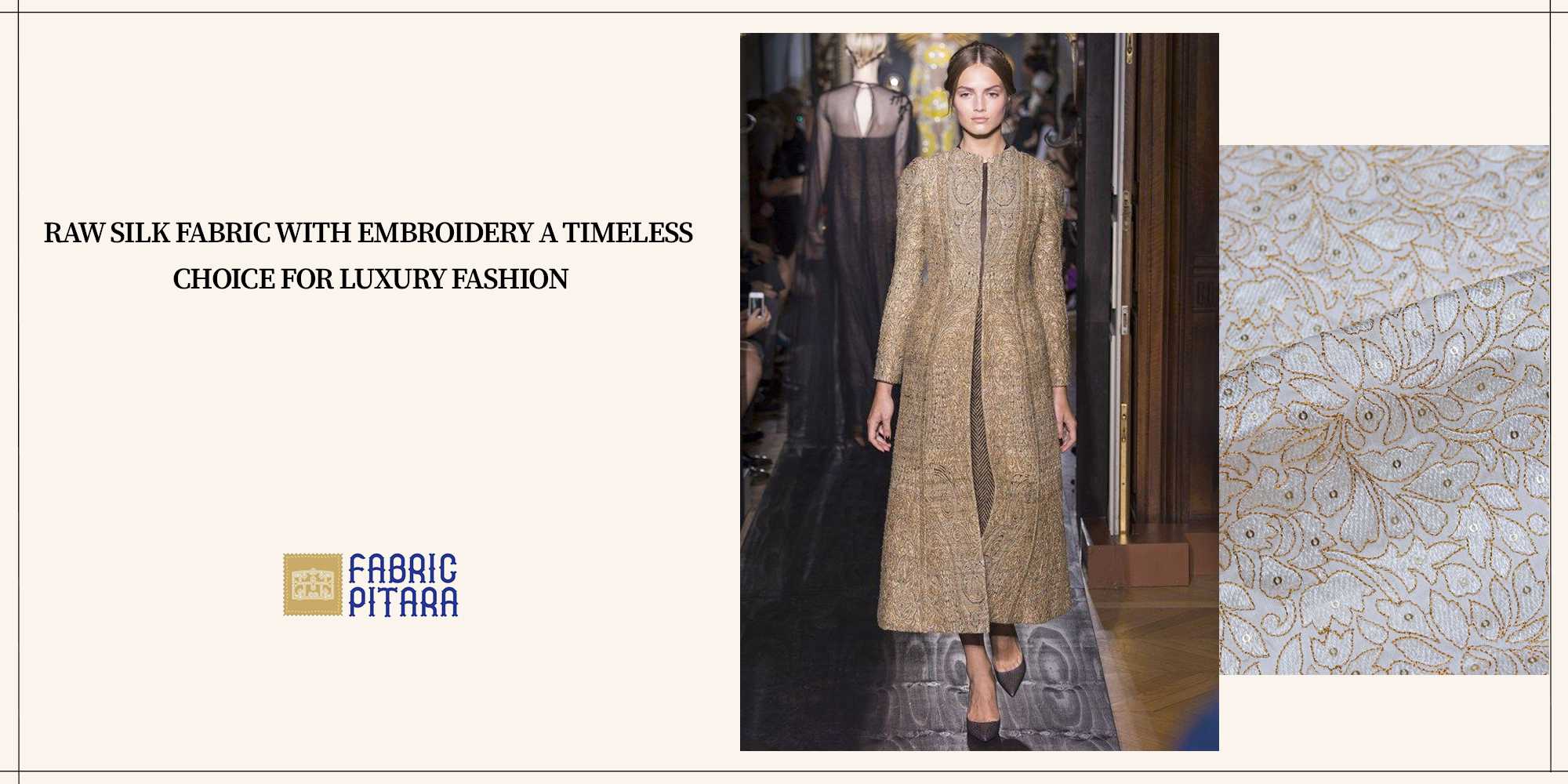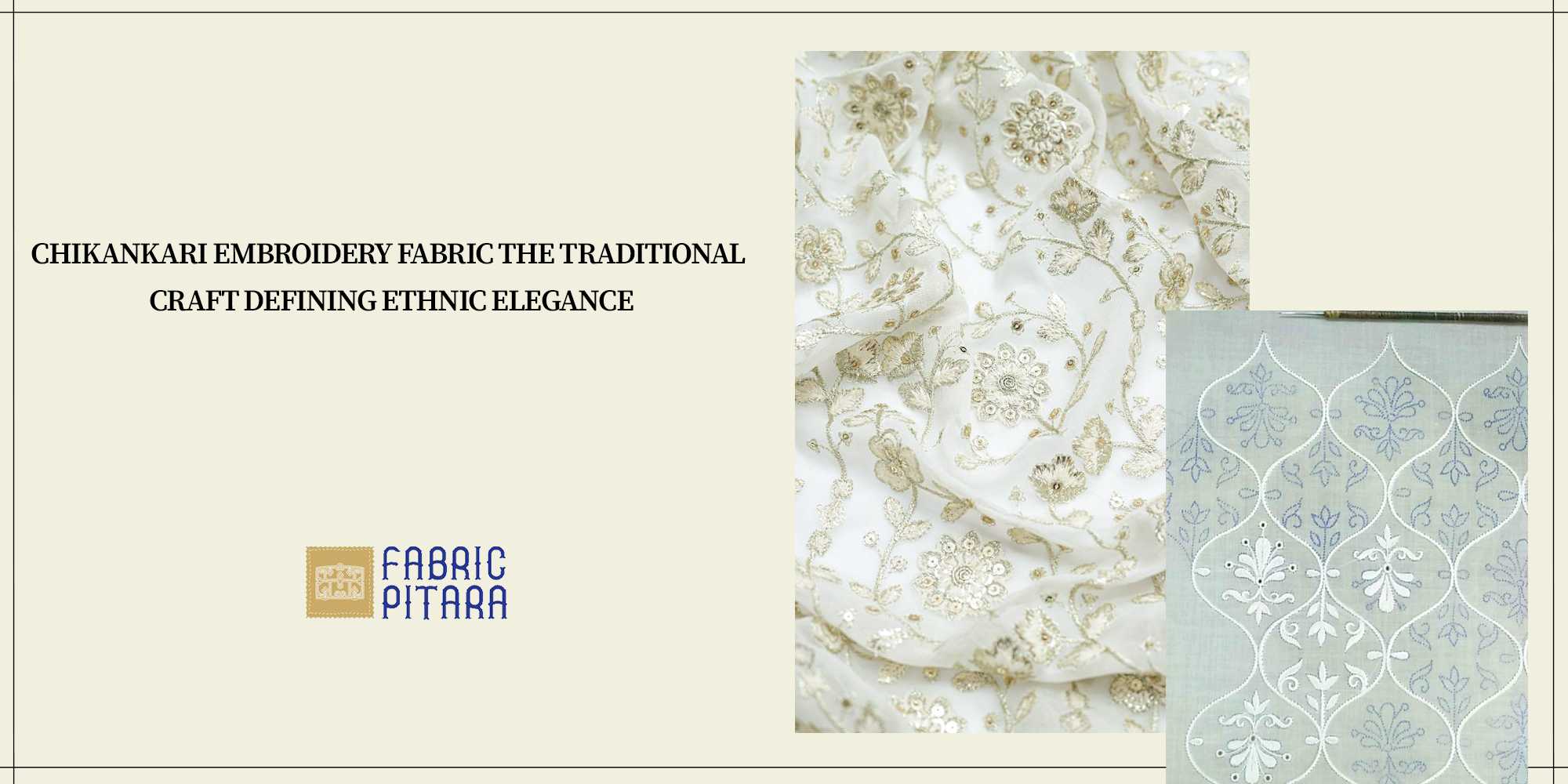![[Colorful embroidered flowers on dark fabric]-[fabricpitara]](https://fabricpitara.com/media/magefan_blog/Firefly_Floral_Embroidery-_Transforming_Fabrics_into_Blooming_Masterpieces_86819.jpg)
An extremely good art shape that has been passed down through the a long time is floral embroidery. This age-antique talent includes developing wonderful works of artwork out of regular materials by means of sewing problematic flower motifs onto cloth. Floral embroidery affords countless possibilities for creativity and self-expression, no matter enjoy stage.
The History of Floral Embroidery
Embroidery has an extended history that goes lower back heaps of years, in particular with floral issues. Various societies have practiced this craft, each contributing its very own fashion and techniques. Silk clothing was adorned with beautiful flower embroidery, which was considered a prestige and wealth symbol in ancient China. Floral embroidery enjoyed a boom in Europe all over the Middle Ages, with increasingly intricate and detailed motifs.
Floral embroidery is still evolving today, using both conventional and modern looks. Crafters have come to love this art form because of its flexibility and the unique touch it gives to accessories, apparel.
Why Floral Embroidery?
There are numerous reasons to adore floral embroidery. Flowers make the most stunning and sundry embroidery subjects due to their attraction. Because each sort of flower has a symbolic price of its own, you may use it to create works that express particular feelings or thoughts. Roses, as an example, stand for romance, lilies for purity, and sunflowers for happiness.
In addition, flowery embroidery is quite adaptable. It can be used to beautify garments, make excellent wall art, customise accessories, or even spruce up regular objects like tablecloths and cushions. The joy of witnessing your embroidered plant life blossom on fabric is unparalleled, and the possibilities are unlimited.
![[Swirled white fabric with a pink floral pattern, creating an interesting texture and design.]-[fabricpitara]](https://fabricpitara.com/media/wysiwyg/ja-1017_1_3.jpg)
![[Swirled white fabric with a pink floral pattern, creating an interesting texture and design.]-[fabricpitara]](https://fabricpitara.com/media/wysiwyg/ja-1017_1_3.jpg)
Getting Started with Floral Embroidery
Embroidering complicated floral motifs may additionally appear tough to a person who's new to floral embroidery. However, everybody can become an expert at this art with the proper resources, techniques, and a few practice.
Essential Tools for Floral Embroidery
Before you begin, gather the following tools:
Embroidery Hoops: These are necessary to maintain the tension of your material even as you figure. Although plastic hoops also are available, wooden hoops are the maximum commonplace.
Needles: There are many sizes for embroidery needles. Select one based on the thread and cloth thickness.
Threads: The most broadly used kind of thread is embroidery floss. Because it comes in a lot of colorings, you may use it to make colorful floral arrangements.
Fabric: Pick a fabric that works properly in your task. Beginners often pick cotton and linen because of its smooth texture and long-lasting great.
Scissors: For accurate thread cutting, small, sharp scissors work best.
Basic Stitches for Floral Embroidery
To start, familiarize yourself with a few basic stitches:
Backstitch: This is a basic stitch that is utilized for shape outline work. It works wonderfully for making flower stems.
Satin Stitch: Solid blocks of color are used to fill in forms with the satin stitch. It works perfectly for leaves and petals.
French Knot: This stitch produces tiny, raised dots that can be used as accent portions or as the facilities of plant life.
Lazy Daisy: This sew is important for flower embroidery because it's far in particular used to shape petal shapes.
Stem Stitch: As the name implies, the stem sew is used to provide curved, clean strains that are perfect for stems and vines.
![[Close-up of a crinkled pink fabric with intricate white floral embroidery, highlighting texture and pattern details.]-[fabricpitara]](https://fabricpitara.com/media/wysiwyg/ja-1601-a_1_1.jpg)
![[Close-up of a crinkled pink fabric with intricate white floral embroidery, highlighting texture and pattern details.]-[fabricpitara]](https://fabricpitara.com/media/wysiwyg/ja-1601-a_1_1.jpg)
Choosing Your Floral Embroidery Design
The sample options for floral embroidery are certainly infinite. You can start with smooth floral designs, like daisy or tulip flowers and work your way up to elaborate preparations, like roses or vegetation. You could make your own embroidery styles by means of drawing your personal designs on paper, or you may discover numerous unfastened embroidery patterns online.
Tips for Creating Stunning Floral Embroidery
Practice Your Stitches: On a scrap piece of fabric, practice your stitches before starting on your finished work. This will guarantee even and consistent stitches and assist you in getting in touch with the procedures.
Experiment with Colors: Play around with color without fear. Using natural colors, you can make realistic flower designs, or you can use bright, unexpected.
Layer Your Stitches: Layer several stitches and colors to give your floral embroidered dimension and depth. For instance, you may use darker thread tones for the edges of a flower and softer shades for its base.
Take Your Time: The method of embroidery is careful and slow. Take your time with it.
Advanced Techniques for Floral Embroidery
After you've gotten the hang of things, you can experiment with more complex methods to elevate your floral embroidery.
![[Elegant gray fabric with intricate white floral embroidery in a spiral pattern.]-[fabricpitara]](https://fabricpitara.com/media/wysiwyg/sl-1404-c_1.jpg)
![[Elegant gray fabric with intricate white floral embroidery in a spiral pattern.]-[fabricpitara]](https://fabricpitara.com/media/wysiwyg/sl-1404-c_1.jpg)
Thread Painting
The method of thread painting, often called needle painting, involves blending various thread tones to produce realistic, pictorial results. For delicate floral patterns with delicate color gradients and shadowing, this method is perfect.
Caring for Your Embroidered Pieces
It's important to carefully care after your flower embroidery project once you've finished it. To keep the colors from fades, hand wash your embroidered items in cool water with a light solution. The stitching may get damaged if you wring the fabric. Instead, spread the fabric out to dry after gently squeezing out any extra water.
Conclusion
A lovely and exciting craft that lets you bring the beauty of nature inside your home is floral embroidery. Every stitch is a step closer to mastering this age-old art form, whether you're stitching an easy daisy on a scarf or a complex rose on a wall art piece. So grab a needle and some thread, and start stitching flowers to let your creativity run wild.







